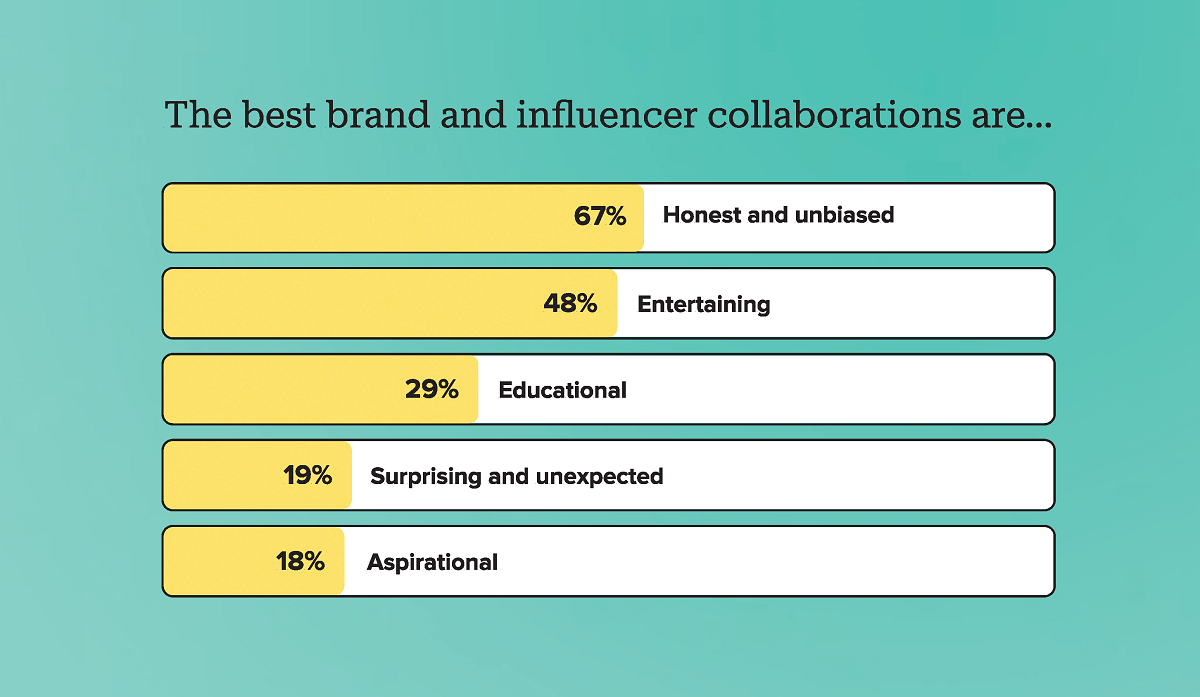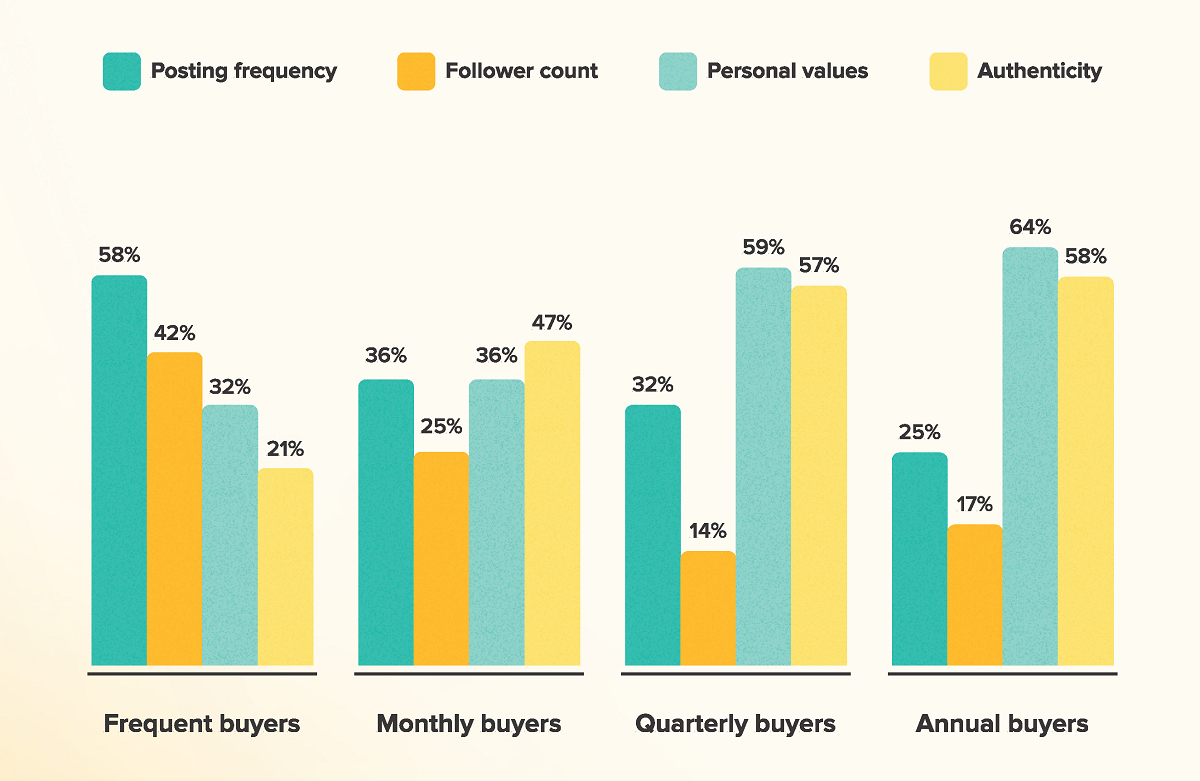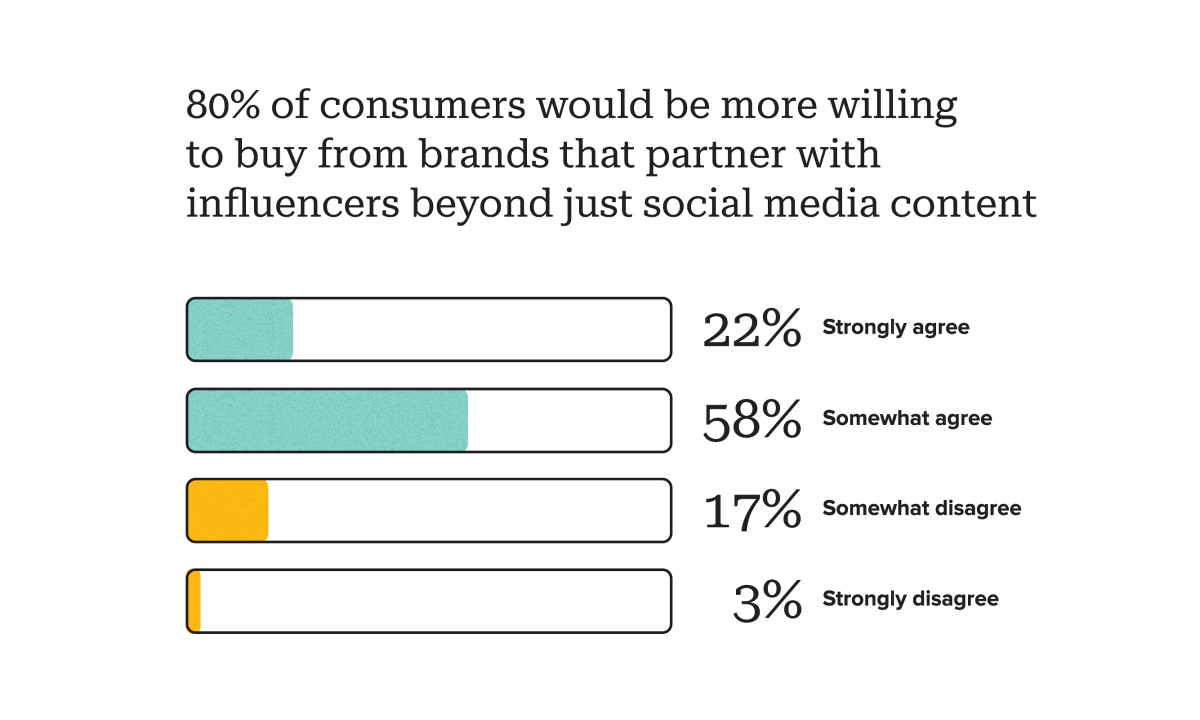
Every savvy marketer knows that credibility is the cornerstone of effective influencer marketing.
Yet as we navigate 2024, the influencer marketing landscape is undergoing a seismic shift. With evolving consumer expectations, complex buying behaviors, and a redefined sense of authenticity, brands must abandon the old playbook to stay ahead.
Sprout Social’s “2024 Influencer Marketing Report” analyzes trends in the current landscape along with their impact in the future. The four-part report surveyed 2,000 social media users across the US and UK who follow five or more brands online, as well as 300 influencers with an audience of 10,000+ followers who earn at least half of their annual income from brand partnerships on social media.
Also relying on data from the Q3 2023 Sprout Pulse Survey of 300 full-time US marketers, the report underscores the evolving landscape of influencer marketing, highlighting the importance of understanding generational differences, leveraging influencer impact on buying behaviors, fostering meaningful brand partnerships, and anticipating future industry shifts.
Brands that adapt to these insights and trends, says Sprout Social, are likely to enhance their influencer marketing effectiveness and consumer engagement.
Consumer Expectations: Know Your Audience
In the ever-changing landscape of influencer marketing, understanding consumer expectations is crucial for brands aiming to build and maintain credibility. Generational demographics play a significant role in shaping these expectations, and brands must leverage consumer data to tailor their influencer strategies accordingly.
Sprout Social finds that Millennials, Gen X, and Baby Boomers value authenticity and alignment with personal values, preferring influencers who resonate with their beliefs. In contrast, 47% of Gen Z respondents indicate that follower count is more important to them than perceived authenticity.

Click here for a larger version of the graphic.
Content preferences also vary across generations. Influencer content related to food and drink (30%) and beauty (26%) captures the most consumer attention. Younger consumers, especially Gen Z, are more interested in fitness, gaming, and lifestyle content, while Gen X shows a preference for movies/TV and sports. Brands must understand these preferences, the report advises, to effectively engage their target audiences with relevant and appealing content.
The top qualities consumers look for in influencers include alignment with personal values (53%), authenticity (47%), and appropriate posting frequency (37%). Additionally, demographic alignment and follower count are critical factors, particularly for Gen Z, who prioritize influencers that reflect their own identities and social circles.

Click here for a larger version of this graphic.
Consumers are most likely to engage with influencers on platforms they frequently use. Instagram, Facebook, TikTok, and YouTube are the dominant platforms, with preferences varying significantly by age group. For instance, 50% of Baby Boomers prefer Facebook, while Gen X and Millennials are almost twice as likely to engage on Instagram. Gen Z, on the other hand, shows a strong preference for TikTok, with 27% engaging with influencers on this platform compared to 15% overall.
Buying Behaviors: The Hidden Power of Influence
Influencer marketing significantly impacts consumer buying decisions, making it crucial for brands to understand the traits driving these behaviors.
Despite underestimating influencer impact, nearly half (49%) of consumers make monthly purchases due to influencer posts, with 86% making at least one annual purchase.
The frequency of purchases varies across different buyer segments. Frequent buyers, primarily Millennials and Gen Z, place a high importance on influencers’ posting frequency and follower count. On the other hand, older, less frequent buyers, such as Gen X and Baby Boomers, prioritize authenticity and alignment with personal values.

Trust in influencers remains robust, especially among younger generations. Nearly half of all consumers trust influencers as much as they did six months ago, while close to 30% trust them even more. Millennials and Gen Z exhibit higher levels of trust in influencers compared to Gen X and Baby Boomers, reinforcing the importance of credible influencer partnerships for engaging these younger demographics.
Certain content qualities are particularly effective at driving purchases. Genuine reviews are the most compelling, with 64% of consumers citing them as influential. Discount codes also play a significant role, encouraging 55% of consumers to buy. Additionally, seeing multiple influencers post about the same product boosts consumer confidence and purchasing intent.
Younger generations and frequent buyers are more inclined to share product feedback with influencers rather than directly with the brands they purchased from. Specifically, 62% of frequent buyers and 41% of Gen Z consumers prefer this feedback loop. This trend highlights the need for brands to collaborate closely with influencers to capture and address valuable customer insights, ensuring that they can respond effectively to consumer feedback.
Brand Partnerships: Building True Collaborations
Successful brand partnerships in influencer marketing are built on mutual respect and shared goals. Understanding what influencers seek is crucial for fostering effective collaborations.
Influencers are selective about the brands they choose to partner with, prioritizing those that align with their values and offer clear budgets and payment structures. A significant 93% of influencers agree that the quality of a brand’s existing social content impacts their decision to collaborate. Influencers value creative control and prefer working with brands that allow them to authentically integrate the brand into their content.
Most influencers charge $250 to $1,000 per post, with 71% offering discounts for multiple posts and 25% open to future discounts for long-term partnerships. This flexibility underscores the importance of nurturing ongoing relationships with influencers.

Influencers have clear preferences for the types of content they like to create. Short-form videos, particularly those ranging from 15 to 60 seconds, are highly favored, with 53% preferring 15-30 second videos and 50% favoring 31-60 second videos. Static image posts and live videos are also popular, while long-form content and interviews are less appealing due to the time and resources required to produce them.
A significant number of influencers (65%) express a desire for earlier involvement in the creative and product development processes. By bringing influencers into the conversation sooner, brands can benefit from their deep understanding of internet culture and their audience’s preferences.
Building true partnerships with influencers goes beyond mere transactions. It requires fair compensation, respect for creative freedom, and early involvement in the creative process. Brands that prioritize these elements are more likely to create high-performing influencer content and foster long-term, mutually beneficial relationships.
Industry Predictions: Shaping the Future of Influence
As brands and marketers look ahead, understanding the emerging trends and shifts in consumer attitudes will be crucial for staying ahead of the curve.
AI is set to impact influencer marketing significantly. Though over half of consumers distrust AI influencers, 37% — rising to 46% among Gen Z — are interested in brands using AI influencers.
Authenticity is evolving, especially for Gen Z, with only 35% valuing it compared to about half of Millennials, Gen X, and Baby Boomers. Younger consumers prioritize entertainment and relevance over perceived genuineness, viewing influencer content as a transactional relationship.
Influencer marketing is expected to extend beyond traditional social media platforms into new and innovative channels. Most consumers agree they’re more likely to buy from brands that partner with influencers on projects beyond social media, such as in-person events, brand trips, and multi-channel ad campaigns. This expansion into real-world and cross-platform collaborations will allow brands to create more immersive and impactful experiences, bridging the gap between digital and physical interactions.
As influencer marketing continues to evolve, brands must adapt to these emerging trends to maintain their relevance and effectiveness. Embracing AI influencers, redefining authenticity, and exploring new channels beyond social media will be key strategies for future success. By staying attuned to these industry predictions, brands and marketers can navigate the changing landscape and continue to build strong, credible connections with their audiences.
READ MORE: 2024 Influencer Marketing Report (Sprout Social)

Why subscribe to The Angle?
Exclusive Insights: Get editorial roundups of the cutting-edge content that matters most.
Behind-the-Scenes Access: Peek behind the curtain with in-depth Q&As featuring industry experts and thought leaders.
Unparalleled Access: NAB Amplify is your digital hub for technology, trends, and insights unavailable anywhere else.
Join a community of professionals who are as passionate about the future of film, television, and digital storytelling as you are. Subscribe to The Angle today!



Discussion
Responses (1)